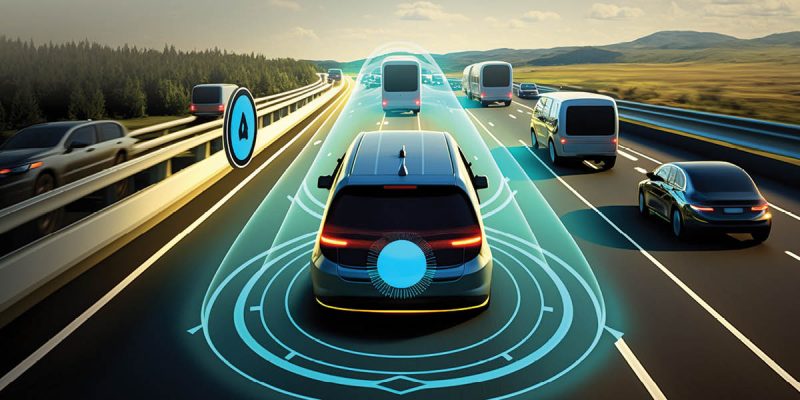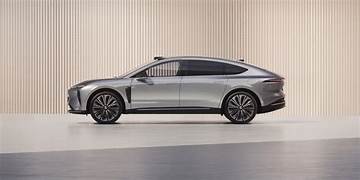The global transportation sector stands at a critical crossroads. For over a century, the internal combustion engine has powered our vehicles, but at a steep environmental cost. As we look toward 2025, a global movement is underway to build a cleaner, more sustainable future of mobility. Driving into a greener future is no longer a distant aspiration but a tangible reality, powered by a convergence of technological innovation, shifting consumer priorities, and a global commitment to combating climate change. This article will provide a comprehensive deep dive into the core pillars of this transformation, exploring how the shift to electric vehicles (EVs), the redesign of our urban spaces, and the integration of smart technology are working in synergy to create a transportation system that is not only more efficient but also in harmony with the planet.
The Revolution of Electric Powertrains

The most significant and impactful factor in this green revolution is the rapid acceleration of the electric vehicle. The EV is no longer just a “green” alternative; it’s a superior solution that is poised to replace the internal combustion engine (ICE) and become the new standard for mobility.
A. Breakthroughs in Battery Technology: The biggest hurdle for EVs—range anxiety—is rapidly becoming a thing of the past. In 2025, new battery chemistries and manufacturing processes are dramatically improving performance. Solid-state batteries, which offer a higher energy density and faster charging times, are moving from a theoretical concept to a tangible reality. This allows for a longer range and a more convenient charging experience, making EVs a practical choice for a majority of consumers.
B. Efficiency and Performance: The electric motor is a marvel of simplicity and efficiency. It delivers instant and unwavering torque, providing exhilarating acceleration with zero tailpipe emissions. The silent, smooth operation of an EV also makes for a more peaceful and comfortable ride. The inherent efficiency of the electric powertrain, with a direct conversion of electricity into motion, means that less energy is wasted as heat, making it a far more efficient system than an ICE.
C. The Electric Vehicle as a Grid Asset: The EV of 2025 is not just a consumer of energy but an active participant in a cleaner, more resilient energy grid. With bi-directional charging, an EV can send power back to a home or business during a power outage or during peak energy usage hours. This makes the car a mobile power bank and a foundational pillar of a smarter, more decentralized energy infrastructure, enabling a greater reliance on renewable energy sources.
Urban Mobility Reimagined
The way we design our cities and communities has a profound impact on how we move. The future of green mobility is as much about urban planning as it is about automotive technology. The cities of 2025 are being redesigned with a focus on people, not just cars.
A. Pedestrian and Cyclist Prioritization: Cities are creating more walkable and bikeable environments by adding dedicated bike lanes, wider sidewalks, and public squares. This makes it safer and more pleasant for people to choose active transportation options for short distances, reducing reliance on cars and improving public health.
B. High-Density, Mixed-Use Development: Sprawling, car-dependent suburbs are giving way to high-density, mixed-use communities where people can live, work, and find entertainment within walking or biking distance. This fundamentally changes the need for a car for daily activities, making a more sustainable lifestyle easier and more convenient.
C. The Rise of Micro-Mobility: For short-distance urban travel, electric bikes, scooters, and other micro-mobility solutions are a game-changer. They provide a quick, efficient, and emission-free way to navigate congested city streets and to solve the “last mile” problem, connecting people from a public transit hub to their final destination.
D. Intelligent Transportation Systems (ITS): The entire transportation network is becoming smarter. Intelligent Transportation Systems use a combination of sensors, data analytics, and AI to manage traffic flow in real-time. This can include adaptive traffic lights that adjust to the flow of traffic and smart parking systems that guide drivers to available spots, reducing the time they spend circling for a space and the emissions they produce.
The Digital Transformation of the Car

The car of 2025 is fundamentally a software-defined machine, with a digital brain that is enabling a new level of efficiency, safety, and personalization. This digital transformation is a key component of a greener future.
A. Software-Defined Vehicles (SDVs): A car’s functionality is increasingly determined by its software rather than its hardware. This means that new features, performance upgrades, and security patches can be delivered via over-the-air (OTA) updates, just like a smartphone. This constant evolution ensures that a car’s capabilities improve over time, extending its lifespan and keeping it at the cutting edge of technology.
B. AI-Powered Efficiency: Artificial Intelligence is at the core of the green car experience. The AI can analyze a car’s driving patterns and make real-time adjustments to optimize for efficiency, such as avoiding congestion and stop-and-go traffic. It can also manage a car’s battery and energy consumption to ensure the most efficient use of its power.
C. Vehicle-to-Everything (V2X) Communication: Cars are no longer isolated; they can communicate with other cars (V2V), with traffic signals and road signs (V2I), and with pedestrians and cyclists (V2P). This real-time communication allows the entire network to be optimized for efficiency, reducing traffic congestion and travel times.
Shifting Consumer Behavior and Policy
Ultimately, the shift to a greener future of mobility depends on a fundamental change in consumer behavior and a supportive government policy. The goal is to make the sustainable choice not only the right choice but also the easiest and most affordable one.
A. Financial Incentives: Governments around the world are providing financial incentives, such as tax credits and rebates, to encourage consumers to switch to EVs. These incentives, coupled with the lower total cost of ownership of an EV, are making a compelling financial argument for a green car.
B. The Conscious Consumer: There is a growing movement of conscious consumers who are making their purchasing decisions based on environmental and social impact. This is driving a demand for cleaner, more sustainable transportation options and is putting pressure on companies to innovate.
C. Infrastructure Investment: The practicality of a green car is directly tied to the availability of a robust and accessible charging and refueling infrastructure. Governments and private companies are investing heavily in building out this network, easing consumer range anxiety and making the transition to a green car more seamless.
Conclusion
Driving into a greener future is a profound and transformative journey that is already well underway. The year 2025 is a testament to the fact that this future is not a distant vision but a tangible reality, powered by a powerful convergence of technology, urban planning, and a global commitment to sustainability. The revolution of electric powertrains, the redesign of our urban spaces, and the integration of smart technology are all working in synergy to create a transportation system that is not only more efficient but also in harmony with the planet.
The long-term impact of this transformation will be immense. It will lead to a dramatic reduction in global carbon emissions, cleaner air in our cities, and a more resilient and efficient transportation network. It is a powerful reminder that we can use innovation and human ingenuity to solve the most pressing challenges of our time. By embracing a greener future of mobility, we are not just changing the way we get around; we are changing our relationship with the planet and with one another, building a future that is in harmony with both.











